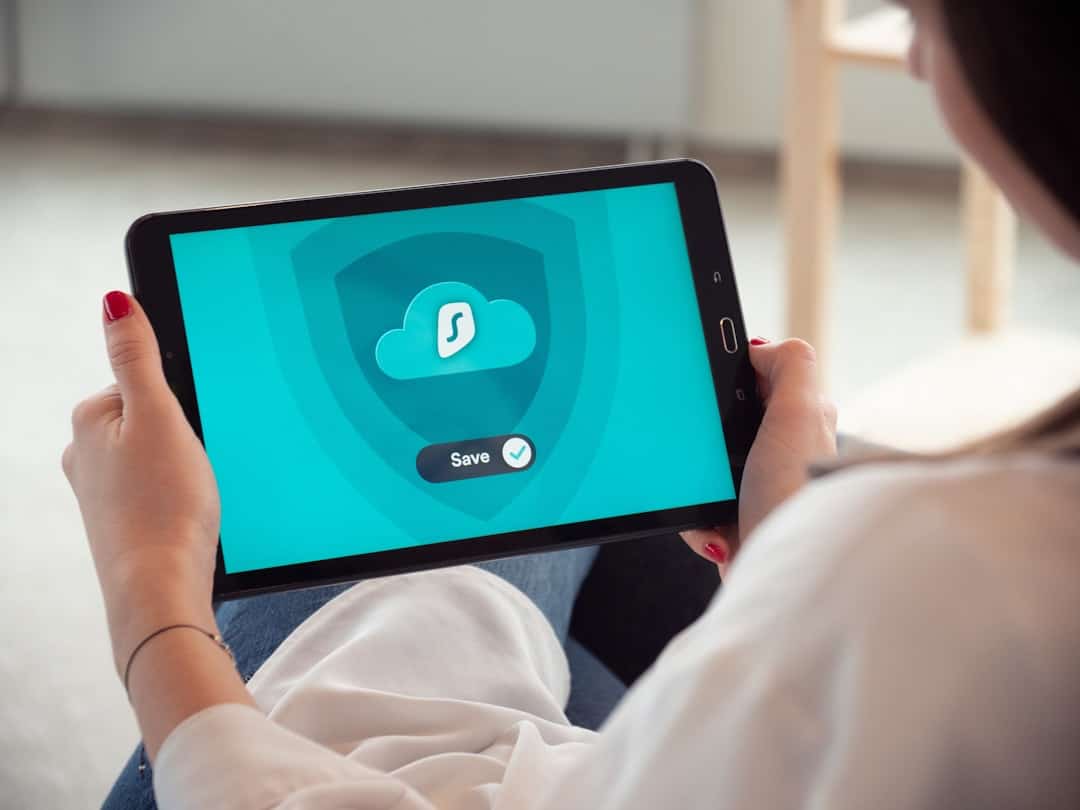Cyber attacks pose an increasing threat in today’s digital landscape, as hackers continually develop new methods to exploit vulnerabilities in systems and networks. These attacks manifest in various forms, including malware, phishing, ransomware, and denial-of-service attacks. The repercussions of a successful cyber attack can be severe, potentially resulting in data breaches, financial losses, and reputational damage.
It is essential for organizations to comprehend the potential impact of cyber attacks and implement proactive measures to safeguard their systems and data. Malware, a common type of cyber attack, refers to malicious software designed to infiltrate and compromise computer systems. It can propagate through email attachments, infected websites, or removable storage devices.
Once a system is infected, malware can exfiltrate sensitive information, disrupt operations, or seize control of entire networks. Phishing is another prevalent form of cyber attack, wherein attackers employ deceptive emails or websites to manipulate users into divulging personal information, such as login credentials or financial details. Ransomware, a particularly harmful type of cyber attack, encrypts a victim’s data and demands payment for its release.
Denial-of-service attacks aim to overwhelm systems or networks with traffic, rendering them inaccessible to legitimate users. By gaining a comprehensive understanding of the various types of cyber attacks and their potential consequences, organizations can better prepare themselves to defend against these threats.
Key Takeaways
- Cyber attacks pose a significant threat to businesses and individuals, with potential for financial loss, data breaches, and reputational damage.
- Strong cybersecurity measures, such as firewalls, encryption, and intrusion detection systems, are essential for protecting against cyber attacks.
- Educating employees and users on best practices, such as creating strong passwords and recognizing phishing attempts, is crucial for preventing cyber attacks.
- Regularly updating and patching systems, including software and hardware, helps to address vulnerabilities and reduce the risk of cyber attacks.
- Utilizing multi-factor authentication, such as biometrics or one-time codes, adds an extra layer of security to prevent unauthorized access to systems and data.
- Developing an incident response plan enables organizations to effectively respond to and recover from cyber attacks.
- Collaborating with external experts and authorities, such as cybersecurity firms and law enforcement, can provide valuable support in preventing and responding to cyber attacks.
Implementing Strong Cybersecurity Measures
To protect against cyber attacks, businesses must implement strong cybersecurity measures to safeguard their systems and data. This includes deploying firewalls, antivirus software, and intrusion detection systems to monitor and block malicious activity. Regular security audits and vulnerability assessments can help identify weaknesses in the network and address them before they are exploited by hackers.
Encryption is also essential for protecting sensitive data both at rest and in transit. By encrypting data, even if it is intercepted by an attacker, it will be unreadable without the proper decryption key. Another crucial aspect of strong cybersecurity measures is access control.
Businesses should implement strict access controls to ensure that only authorized users have access to sensitive information and systems. This can be achieved through the use of strong passwords, multi-factor authentication, and role-based access controls. Additionally, employee training and awareness programs can help educate staff about the importance of cybersecurity and how to recognize and respond to potential threats.
By implementing these strong cybersecurity measures, businesses can significantly reduce their risk of falling victim to cyber attacks.
Educating Employees and Users on Cybersecurity Best Practices

One of the most critical components of a robust cybersecurity strategy is educating employees and users on best practices for staying safe online. Human error is often the weakest link in an organization’s cybersecurity defenses, as employees may inadvertently click on malicious links, download infected files, or fall victim to phishing scams. By providing comprehensive training on cybersecurity best practices, businesses can empower their staff to recognize and avoid potential threats.
Employee education should cover topics such as identifying phishing emails, creating strong passwords, using secure Wi-Fi networks, and recognizing the signs of a potential cyber attack. It is also essential to emphasize the importance of keeping software and systems up to date to patch known vulnerabilities. Regular training sessions and simulated phishing exercises can help reinforce these best practices and ensure that employees remain vigilant against evolving cyber threats.
In addition to educating employees, businesses should also provide guidance to their customers and users on how to protect their personal information and stay safe online. This can include providing tips for creating secure passwords, recognizing fake websites, and avoiding scams. By taking a proactive approach to educating both employees and users, businesses can create a culture of cybersecurity awareness that strengthens their overall defenses against cyber attacks.
Regularly Updating and Patching Systems
| Metrics | Data |
|---|---|
| Number of systems | 100 |
| Percentage of systems updated | 95% |
| Number of patches applied | 200 |
| Time taken to update systems | 2 hours |
One of the most critical aspects of maintaining strong cybersecurity is regularly updating and patching systems to address known vulnerabilities. Software vendors regularly release updates and patches to fix security flaws that could be exploited by hackers. Failing to apply these updates promptly leaves systems at risk of being compromised by cyber attacks.
Businesses should establish a robust patch management process to ensure that all software and systems are kept up to date with the latest security patches. This includes not only operating systems and applications but also firmware for devices such as routers and printers. Automated patch management tools can help streamline this process and ensure that updates are applied consistently across the organization.
In addition to applying software updates, businesses should also regularly review and update their security policies and procedures to reflect changes in the threat landscape. This includes revisiting access controls, password policies, and incident response plans to ensure that they remain effective in mitigating potential risks. By prioritizing regular updates and patching of systems, businesses can significantly reduce their exposure to cyber attacks.
Utilizing Multi-factor Authentication
Multi-factor authentication (MFA) is a powerful tool for enhancing security by requiring users to provide multiple forms of verification before accessing a system or application. This typically involves something the user knows (such as a password), something they have (such as a mobile device or security token), or something they are (such as a fingerprint or facial recognition). By requiring multiple factors for authentication, MFA adds an extra layer of protection against unauthorized access.
Businesses should implement MFA for all sensitive systems and applications, particularly those that contain valuable or confidential information. This can help prevent unauthorized access in the event that a user’s password is compromised through phishing or other means. MFA is especially important for remote access to corporate networks, as it helps ensure that only authorized users can connect to the network from external locations.
In addition to enhancing security, MFA can also provide businesses with valuable insights into user behavior and potential security incidents. By monitoring authentication attempts across multiple factors, businesses can detect unusual patterns or suspicious activity that may indicate a potential cyber attack. By utilizing multi-factor authentication, businesses can significantly strengthen their overall security posture and reduce the risk of unauthorized access.
Developing an Incident Response Plan

Despite best efforts to prevent cyber attacks, businesses must also be prepared to respond effectively in the event of a security breach. Developing an incident response plan is essential for minimizing the impact of a cyber attack and restoring normal operations as quickly as possible. An incident response plan outlines the steps that should be taken in the event of a security incident, including who is responsible for each task and how communication will be managed.
Key components of an incident response plan include establishing clear roles and responsibilities for responding to a security incident, defining communication protocols for notifying stakeholders and authorities, and outlining procedures for containing and mitigating the impact of the incident. Businesses should also conduct regular tabletop exercises to test their incident response plan and ensure that all staff are familiar with their roles and responsibilities. In addition to preparing for technical aspects of incident response, businesses should also consider the legal and regulatory implications of a security breach.
This includes understanding reporting requirements for data breaches and ensuring compliance with relevant privacy laws. By developing a comprehensive incident response plan, businesses can minimize the impact of a security incident and demonstrate their commitment to protecting sensitive information.
Collaborating with External Experts and Authorities
In the face of increasingly sophisticated cyber threats, businesses can benefit from collaborating with external experts and authorities to enhance their cybersecurity defenses. This can include engaging with cybersecurity consultants, threat intelligence providers, or industry-specific organizations that can provide valuable insights into emerging threats and best practices for mitigating risk. Cybersecurity experts can conduct thorough assessments of an organization’s security posture and provide recommendations for improving defenses against potential cyber attacks.
They can also offer guidance on implementing advanced security technologies and strategies that align with industry standards and best practices. By leveraging external expertise, businesses can gain valuable insights into their security vulnerabilities and develop more effective strategies for protecting their systems and data. In addition to working with external experts, businesses should also establish relationships with law enforcement agencies and regulatory authorities that specialize in cybersecurity.
In the event of a security incident, these organizations can provide valuable support in investigating the breach, identifying the perpetrators, and taking legal action against those responsible. By collaborating with external experts and authorities, businesses can strengthen their overall cybersecurity posture and demonstrate their commitment to protecting against cyber attacks. In conclusion, cyber attacks pose a significant threat to businesses in today’s digital landscape, with potentially devastating consequences for those who fall victim to them.
By understanding the different types of cyber attacks and their potential impact, businesses can better prepare themselves to defend against these threats. Implementing strong cybersecurity measures such as firewalls, antivirus software, encryption, access controls, and employee training is essential for protecting against cyber attacks. Regularly updating and patching systems, utilizing multi-factor authentication, developing an incident response plan, and collaborating with external experts are also crucial components of a comprehensive cybersecurity strategy.
By taking proactive steps to strengthen their defenses against cyber attacks, businesses can significantly reduce their risk of falling victim to these increasingly prevalent threats.
If you’re interested in learning more about the potential impact of cyber attacks on virtual worlds, you may want to check out this article on tourism in the metaverse. It explores the growing popularity of virtual environments and the potential vulnerabilities they may face from cyber threats.
FAQs
What is a cyber attack?
A cyber attack is a deliberate attempt by hackers to damage or disrupt a computer network or system, usually for malicious purposes such as stealing sensitive information, causing financial harm, or gaining unauthorized access.
What are the common types of cyber attacks?
Common types of cyber attacks include malware, phishing, ransomware, denial of service (DoS) attacks, and man-in-the-middle attacks. Each type of attack targets different vulnerabilities in computer systems and networks.
What are the potential impacts of a cyber attack?
The potential impacts of a cyber attack can include financial losses, theft of sensitive information, disruption of business operations, damage to reputation, and legal consequences. In some cases, cyber attacks can also pose a threat to national security.
How can individuals and organizations protect themselves from cyber attacks?
To protect themselves from cyber attacks, individuals and organizations can implement strong cybersecurity measures such as using firewalls, antivirus software, and encryption, regularly updating software and systems, training employees on cybersecurity best practices, and conducting regular security audits.
What should I do if I become a victim of a cyber attack?
If you become a victim of a cyber attack, it is important to report the incident to the appropriate authorities, such as law enforcement or a cybersecurity incident response team. You should also take immediate steps to mitigate the impact of the attack, such as changing passwords, disconnecting affected systems from the internet, and notifying any affected parties.











Leave a Reply